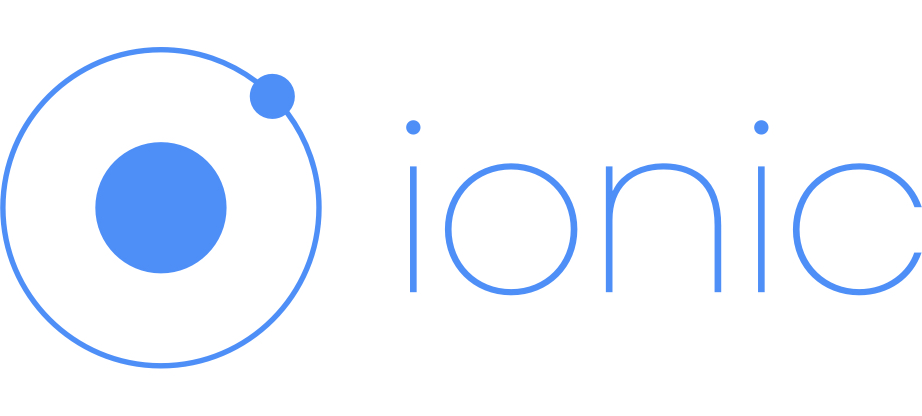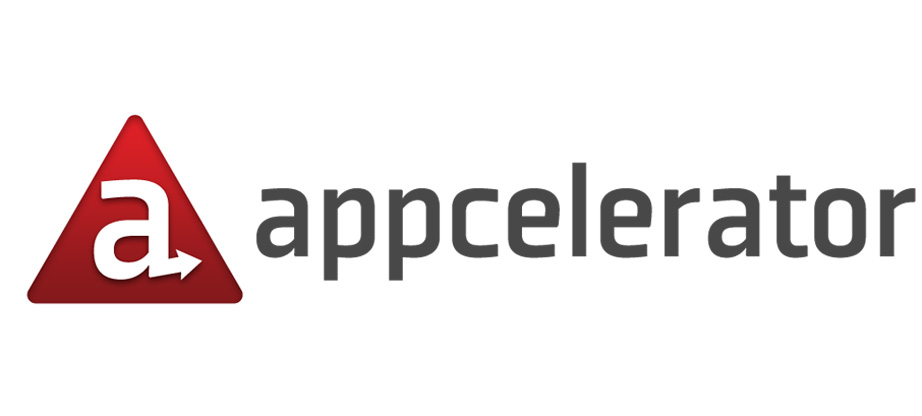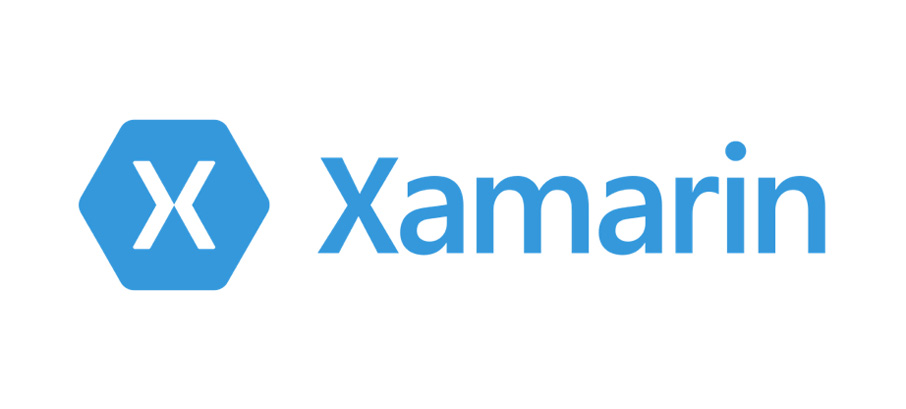Right Hybrid App Framework for Your Business
The market for mobile apps is huge. According to a study conducted by IDC, the worldwide smartphone market grew 13.0% year over year in 2015 Q2 with Android market domination of 82.8% share in 2015 Q2. To address this need for mobile applications and in order to develop and deploy mobile applications across multiple platforms, companies today are increasingly considering any hybrid app framework. In fact, Gartner predicts that more than 50 percent of mobile apps deployed by 2016 will be hybrid.
“Hybrid is like a small website running in a browser shell in an app having access to the native platform layer”. A hybrid app, built using HTML, CSS, and JavaScript, employs a mix of native as well as web technologies and comes wrapped in a native wrapper.
Hybrid App Applications
It is cross-platform, that is, you get a one-time cost for all platforms. With the app installed on mobile devices, you can also use native elements. Easier and faster learning curve especially with technologies like jQuery, jQueryMobile, HTML5, and CSS3. “With new platform entrants to space, like Google Glass and Apple Car, hybrid mobile app development with native tweaks is mandatory”.
Understanding how important a mobile app is for your business and knowing the benefits of a hybrid app is half the battle won. Main confusion comes when you have to zero upon the type of mobile app development framework.
Before that, it is essential to know that there are two approaches to cross-platform mobile apps. Frameworks like PhoneGap, Sencha, and Ionic use an embedded browser control and write a web app wrapped as a native app. Appcelerator Titanium, Xamarin Studio, and React use a cross-platform tool that creates native apps.
To know what would work best within your budget, time, and skills and help you get the best native-like experience with a hybrid app, we compare top 7 hybrid app frameworks.
Ionic
The Ionic framework lets you develop hybrid mobile applications using HTML, JavaScript, and CSS, just like any other hybrid app framework. However, what makes it unique is AngularJS JavaScript framework core and support for SASS (Syntactically Awesome Style Sheets) CSS extension.
It currently supports Android and iOS devices, with support for Windows Phone and Firefox OS on a future roadmap. Ionic offers great possibilities to build hybrid apps which not only look and feel awesome but which also behave as natural as a native app and rely on one shared code base.
Ionic was created by Max Lynch, Ben Sperry, and Adam Bradley of Drifty Co. in 2013. Its 1.0 beta was released in March 2014, with a 1.0 final in May 2015. Both Ionic and AngularJS are available under the MIT license.
Choose Hybrid App Framework: When/Where Not To Use Ionic?
If you wish to write code once and make it useful on the web, mobile, and native app, Ionic is a great bet. Although the Ionic framework comes with the pain of most early-stage frameworks, the community and documentation are second to none when it comes to an open-source project.
Ionic is great if you are familiar with AngularJS. However, if you’re developing an app for the first time and need to invest in learning a framework, then learning Android/ iOS development is better as AngularJS can be tougher to learn.
Sure, hybrid mobile development is not as adept as native. Still, compared to other hybrid mobile frameworks, Ionic is the least annoying, in that, it can provide the best native-like look and feel. It’s also somewhere in the perfect middle.
Moreover, to work on the hybrid-app challenges, Ionic is working on a variety of services like Analytics, Push notifications, UI Builder, fast deployments, and more.
Pros and Cons of Ionic Hybrid App Framework
Pros of Ionic Hybrid App Framework:
- Open-source and free.
- AngularJS based UI Library.
- Heavily optimized for touch devices.
- iOS and Android support.
- Most common UI patterns viz. tabs, lists, header bars, cards are nicely covered.
- Ionic leverages CSS transitions to transform for animation, thereby, maximizing available processor time.
- The easier and faster learning curve with technologies like JavaScript, HTML5, and CSS3.
- Offers a large number of 3rd party resources, plugins, themes, starter apps.
- Excellent support, especially the Ionic forum.
Cons of Ionic Hybrid App Framework:
- When compared to native apps, the final result doesn’t have the smoothness, especially on mid-range Android phones.
Our Take:
With the power of AngularJS, Ionic relies on native hardware acceleration and, therefore, can prove to be the most promising framework for building cross-platform is one word for your business, given it falls closest to a native app in look.
Phone Gap
PhoneGap is built on top of the Apache Cordova platform. It allows developers, with little or no experience in JAVA or Objective C, to create applications on the most popular mobile platforms by using JavaScript, HTML5, and CSS.
Its application can be viewed as a hybrid web page saved on a device that also uses the most common mobile platform or device features like camera, device storage, contact lists, and native notifications.
Contrary to the popular belief, PhoneGap is not a write-once-deploy everywhere solution. While PhoneGap is capable of running on various supported devices, it needs to be tested and its code needs to be tweaked on every target device in order to be deployed successfully.
PhoneGap has been downloaded >1 million times and is used by >400,000 developers. It will always remain open source and free under the Apache License, Version 2.0. Its code was contributed to the Apache Software Foundation (ASF) as Apache Cordova.
Choose Hybrid App Framework: When/Where Not To Use PhoneGap?
For the ones who wish to build a cross-platform app quickly and inexpensively, PhoneGap is the right option. It can help you build simple mobile apps that can function on different platforms. It is great for data-driven apps.
If you’re new to mobile development with a background in web development, PhoneGap framework can be used as a gateway in learning how mobile apps work. Moreover, it can even push you to try your hand at creating mobile apps in the native language.
PhoneGap is great for data-driven apps. It also provides attractive UI. For graphic-sensitive apps, you should go with the respective platform’s native programming languages.
While a PhoneGap app will lack the performance of a native app and buttons won’t respond as quickly as native ones, PhoneGap can be a right option for you if performance and the native feel aren’t essential to meet your requirements.
Pros and Cons of PhoneGap
Pros of PhoneGap Hybrid App Framework:
- Supports iPhone, Android, Palm, Blackberry, Bada, Symbian, WebOS, and Windows Phone 7.
- Simple abstractions for access to hardware features like vibrate, GPS, etc.
- No licensing costs as PhoneGap are open-source and free.
- PhoneGap apps install just like other native applications and have app store discoverability.
- It follows a plugin architecture which helps to get access to native device APIs in an extended modular way.
Cons of PhoneGap Hybrid App Framework:
- Requires in-depth testing for each targeted platform.
- Lacks a typical navigation bar and is in full-screen mode.
- Apps that require rich animations or effects tend to be unresponsive and choppy.
- When targeting older or mid-range devices, inconsistencies may become apparent.
Our Take:
Overall, PhoneGap is a nice tool for creating simple and affordable mobile apps. However, you should never expect it to perform tasks it wasn’t meant to complete. If you begin to see that your applications are becoming bigger and harder to maintain, or you start experiencing performance issues, it may be time to start thinking about moving to native app development.
React JS
ReactJS or simply React, is a JavaScript library for creating user interfaces. Created by a collaboration between Facebook and Instagram; it’s maintained by these two companies currently with the help of other developers.
ReactJS isn’t a complete framework. Thus, it doesn’t provide all the components one can find in other projects. React encourages the creation of reusable UI components presenting data that changes over time. Because of this, many people refer to React as the V (view) in MVC (model-view-controller) software pattern.
A unique feature of ReactJS is its notion of a Virtual-DOM coupled with a reconciliation process. This allows the framework to make efficient updates to the UI when the application state changes.
React only handles the user interface in an app, due to which many people consider. React as the V in MVC It is a JavaScript library for creating user interfaces by Facebook and Instagram
Choose Hybrid App Framework: When/Where Not To Use React?
As React allows developers to create fast user interfaces easily, it makes no assumptions about the rest of the technology stack used. Thus, it’s sensible and easy to be tried out on a small feature in an existing project.
React allows you to write applications for iOS and Android apps with native UIs using a common codebase. However, it is up to you as a developer to structure your code in such a way that business logic is pushed down into a shared set of modules.
A great feature of React is that it can render on the server using Node.js. This can enable you to use the same knowledge you’ve gained both on the client and on the server. This has major SEO and performance benefits.
One of the most noteworthy concepts of React is the virtual DOM. An issue with this is that it’s a bit tricky when you actually want to control the DOM yourself. The virtual DOM, however, is used for efficient re-rendering of the DOM by using a different algorithm that only re-renders the components changed. This, in turn, enables the library to be ultra-fast.
Pros and Cons of React
Pros of React Hybrid App Framework :
- Concise and impressive code.
- No need to track what data or fields are being changed as all changes are treated the same.
- When you are underlying data changes, React will automatically manage all UI updates.
- It’s easy to write UI tests cases because of the virtual DOM system implemented totally in JS.
- It allows describing UI in a modular way that helps to capture the dependency tree of the view.
Cons of React Hybrid App Framework:
- Integrating ReactJS into a traditional MVC framework would require some configuration.
- This framework is not a full framework. Neither router nor model management libraries are built into ReactJS.
- Although source code is easy to read, the documentation is meager.
Our Take:
React challenges a lot of conventional wisdom and, at first glance, some of the ideas may seem crazy. However, those crazy ideas, especially the novel ‘functional’ approach to constructing the UI, have worked for many big businesses. It’s, therefore, worth giving a shot.
Appcelerator
Appcelerator’s Titanium is an open-source development platform that helps to create applications using web technologies like JavaScript, HTML, and CSS.
It is relatively inexpensive and easy to simultaneously build native apps for various mobile OS platforms with the help of Titanium. Currently, it provides support for iOS, Android, BlackBerry, and mobile web applications Titanium’s applications are written in JavaScript with the use of a special Titanium SDK that allows access to the required frameworks.
With 60-90% code reuse across device platforms, Titanium can help you deliver a native app for rich user experience. As the framework doesn’t offer a screen design tool, developers need to create and modify apps through the code only.
Titanium is supported by a development community of >700,000 mobile developers with 75,000 mobile apps deployed on >280,000,000 devices. 70% of Fortune 100 enterprises count on Appcelerator for their mobile success.
In February 2013, Business Insider estimated that 10% of smartphones worldwide ran Titanium-built apps.
When/where not to use Appcelerator?
To build an app with Titanium, you need to first install an official SDK for each mobile platform. After a build is completed, the project will be extensively modified by the original SDK so that the result is a fully native app in terms of UI and functionality. While a lot of time can be saved while developing apps with Titanium, you still need to test apps on native platforms.
Thus, while using Appcelerator to build a hybrid app for various platforms, add in the extra costs and time projection for your QA and device testing teams. Even if you don’t plan on building apps for multiple platforms, Titanium still can be a good solution for your business as it makes the development process much easier.
For example, there’s no need to solve high-level is one-word tasks special to a particular platform like memory management. In this case, you, as a developer, need not focus on OS documentation but can concentrate on design implementation and on adding more features.
Pros and Cons of Accelerator
Pros of Appcelerator Hybrid App Framework:
- Appcelerator compiles the application as the native one, thereby providing better performance.
- This open-sourced framework supports iOS, Android, BlackBerry OS, Windows Phone, and Tizen • Appcelerator’s features are rich in provided API.
- It utilizes JavaScript, HTML5, CSS3, Ruby, PHP, and Python to create applications.
- Provides support for CommonJS and asynchronous module definition.
- Its pre-cache resources enable faster loading.
Cons of Appcelerator Hybrid App Framework:
- It is one of the most skill-intensive and complex frameworks in the market.
- Reliance upon the Titanium API can lead to flexibility limitations along with unintuitive development experience.
- Complex applications can encounter weird glitches.
Our Take:
Building complex apps with Titanium is possible, but with a lot of pain. However, for an app that is simple or for someone who is new to programming, Titanium would be a great choice.
Sencha Touch
Sencha Touch is a framework for web-app development using HTML 5, CSS, and JavaScript. It provides access to a rich diversity of resources like UI and control libraries.
This high-level Javascript UI framework runs on touch-based devices. Currently, it targets the iPhone, the iPad, and Android-based phones. An interesting aspect of this framework is that as WebKit runs on its targeted devices, it can use all the features of HTML5 and CSS3. It also features beautiful interactive UI elements which emulate native iPhone interfaces but not in a pixel-by-pixel way as they put their own touches into it.
Sencha was launched in 2010 after a combination of Ext JS, jQTouch, and Raphaël. The latest version, Sencha Touch 2.4.2, was released in June 2015. It has 10,000 customers worldwide including 60% of Fortune 100 companies.
Choose Hybrid App Framework: When/Where Not To Use Sencha Touch?
Built close to lessons learned from Ext JS, Sencha Touch is a mature framework. It can even fit the most demanding app needs. Sencha Touch inherits the best of Ext JS and further takes it to the next level by upgrading to utilize ECMAScript5, CSS3, and HTML5 best practices. This is the Touch’s differentiator from Ext JS – it no longer supports older browsers but has an unsurpassed functionality.
Developing in Sencha Touch is sometimes more of a configuring effort with a light touch of real JavaScript development. It can help the learning curve but it makes Touch’s API documentation essential even to the seasoned programmers. Fortunately, its documentation is also amongst the best out there.
This framework has some modern features and APIs that simplify the task of developing applications for mobile. Although developers are required to work harder to get the coding right, yet the end result is fantastic. To create native apps for different mobile platforms, codes can be used. This technique helps to save a lot of time and cost associated with mobile development.
Pros and Cons of Sencha Touch
Pros of Sencha Touch Hybrid App Framework:
- Good-looking and customizable UI JavaScript library.
- Good documentation, support, and community.
- Native-app packaging system support helps both with mobile and classic web development.
- Sencha Architect, a Graphical User Interface tool, is available which helps to create interfaces in an easy drag-and-drop manner.
- Sencha Cmd, a Command Line Interface, helps to provide support in theming, scaffolding, building and packaging the app.
Cons of Sencha Touch Hybrid App Framework:
- Sencha is a commercial product with a limited free version.
- As it is not an open-source framework, there is the risk of vendor lock-in.
- Its peculiar theming system can take beginners some time to get used to. Also, its comprehensiveness provides a steeper learning curve.
Our Take:
Sencha Touch takes much longer to learn and become comfortable with but it’s very robust. With a suite of complementary apps, Sencha Touch can become your one-stop shop for all mobile web needs.
IBM Worklight
IBM Worklight or IBM MobileFirst is an open, complete, and advanced mobile enterprise-application platform that can enable you to efficiently build and deliver mobile applications for your enterprise.
With Worklight, developers can use JavaScript, HTML5, and CSS3 to develop applications for different mobile devices. By avoiding the vendor lock-in, it also gives a set of features to enterprises viz. application center, version management, direct update, connectivity to databases, push notification, web services, and an enterprise information system.
Its five main components are IBM Worklight Studio, IBM Worklight Device Runtime Components, IBM Worklight Server, IBM Worklight Application Center, and IBM Worklight Console. IBM MobileFirst (formerly Worklight) was launched in 2013 as an umbrella brand for IBM’s mobile software, services, and solutions.
IBM has more than 4,300 patents in mobile, social and security, which have been incorporated into IBM MobileFirst solutions. Third-party frameworks and library extensions like jQuery Mobile, Dojo mobile, Angular.js, node.js can be used
Choose Hybrid App Framework: When/Where Not To Use Sencha Touch?
Through MobileFirst, IBM says it will help companies design and build customer-facing apps that reduce operational costs or help grow their business.
You must consider Worklight if you need to deliver an optimal user experience across many mobile platforms and devices; if you want to develop in HTML5 but also wish to combine native code; or if you have important application scalability and security considerations in your organization.
Worklight’s standards-based programming language is another key benefit because programmers don’t want to be locked into a particular vendor, language, or IDE. With this, you need not to be dependent on the vendor’s engineering and support team to fix problems and clarify the situation.
Pros and Cons of Worklight
Pros of Worklight Hybrid App Framework:
- Worklight is a comprehensive mobile app development platform that helps to build web, hybrid, and native apps without compromising on security issues.
- It supports all native functionalities like geolocation services, standard telephony, augmented reality, etc.
- The framework supports iOS, Android, Windows, and BlackBerry platforms.
Cons of Worklight Hybrid App Framework:
- It’s not always beneficial to ‘hands-on’ testing as in order to simulate a platform, you need to port code to a different program.
- Needless to say, it provides less performance as compared to a fully native app.
- Worklight costs money as you may not publish its business-to-consumer (B2C) or business-to-enterprise (B2E) application without a license.
Our Take:
Worklight offers an open platform that helps speed the delivery of existing and new mobile applications to multiple devices. It also helps enable secure connections between smartphone and tablet applications with enterprise IT systems. Thus, it can prove to be useful for implementing bring-your-own-device strategies in IT organizations.
Xamarin
It is a framework used to develop cross-platform mobile applications using C# language that can be compiled to the native code of various different target architectures and it includes interfaces with Android, iOS, and other platforms.
Xamarin has distinguished its platform from other tools in the market in a couple of ways. First, it uses the C# language. Many developers feel that C#’s static type checking makes it a more robust language for developing large applications than the JavaScript. Second, Xamarin has always promoted its support for platform-native user interfaces. The one-size- fits all interfaces built with HTML tools may be easy for developers but that doesn’t make them good for end users.
Choose Hybrid App Framework: When/Where Not To Use Xamarin?
Instead of developing a complete application for each platform, which would increase the time to market and deplete monetary resources, Xamarin enables developers to syndicate about two-thirds of a single codebase using C#.
Moreover, it uses native API’s to create a UI and UE that the users of specific devices are accustomed to. This cross-platform solution requires a unique UI code for each platform and familiarly with each platform since it uses native UI components. Studios like data security and encryption can be done in C# Net and shared across platforms. The best thing about Xamarin framework is the people. Here you can talk to the engineers who are working on the products and get answers or even hotfixes immediately.
It is a great option if you need cross-platform mobile-app development and you have C# skills. You can develop apps by keeping about 60 -70% code of the app along with having to work only on the UI for the different platforms.
Pros and Cons of Xamarin
Pros of Xamarin Hybrid App Framework:
- Customizable, thereby, allowing developers to create the native look and feel for each platform.
- With a C# shared codebase and access to native User Interface and User Experience components for each platform, native apps can be written and code can be shared across multiple platforms.
- It supports Android, iOS, and Windows platforms.
- It provides full support for hardware features like GPS, camera, and accelerometer.
Cons of Xamarin Hybrid App Framework:
- There is a steeper learning curve involved in getting used as knowledge of C#, platform framework, and Xamarin IDE is necessary.
- Can’t use open-source libraries that are popular on iOS / Android.
- Its smaller ecosystem and paid version make it hard to find support issues.
Our Take:
Xamarin is not a ‘Write once, run anywhere’ platform. It basically allows developers to code the applications in a single language C#, which allows code-sharing across platforms.
Conclusion
Hybrid mobile app development is going to grow and become more important as other platforms, like Google Glass and Apple Car, become viable platforms for app developers. With so many platform entrants to the space, hybrid development with native tweaks will become mandatory.
If you plan to get a hybrid app built (thanks to practical benefits a hybrid app provides), a big question awaits you – which hybrid-app framework to rely upon? The biggest challenge is to pick the right hybrid-app framework based on your requirements. After reviewing the above 7 frameworks, answer the following simple questions that can help you make the right choice to a large extent:
Now, with clear answers in your mind, you can easily make your pick. In short, there is nothing like the best hybrid-app framework that is right for everyone as they all will do the same thing in the end with varied results on how you wish to present your product to your audiences. Despite the fact that no framework can give a native-like feel to an app, hybrid-app frameworks can help you get much closer with minimum hassles and resources. The problem here is actually creating the NATIVE experience. It isn’t so much the technology that limits this, it’s the developers and their budget and usage habits that do this.
Just make sure you are relying on a professional and experienced team of developers to build a hybrid app for your business. The team will not only help you in zeroing upon the framework best suitable to your audiences and requirements, but it will also help you in building a robust, functional app with a native-like look and feel.









